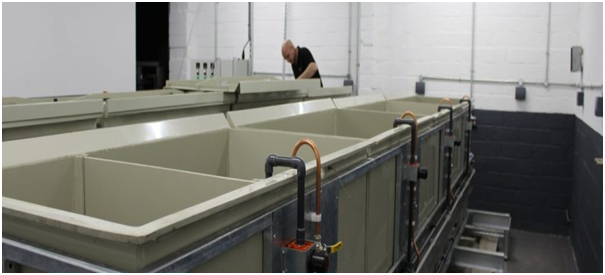NDT, or non-destructive testing, is the name given to the specialist kind of equipment used to non-invasively test an item, material or object without causing any harm or damage. Here are the top 5 types of NDT supplies to use if you are looking to quality control and better understand the medium you are working with.
- Penetrant Line
A PT penetrant system is a process used to determine defects in the surface of an object or material. A fluorescent penetrant line offers a sophisticated method by which to discover the depth, width and integrity of any indent or crack that may have occurred. A NDT Electrostatic Penetrant line provides a non-invasive way to check the surface of a material or object for defects without creating any further damage. This method only works on non-porous materials and can be used on both plastic and metal alike.
- Black light
Black lights use UV lighting to inspect particles otherwise invisible to the naked eye. The UV radiation received by the phosphors in the black light is what helps to convert the image into something visible and a variety of liquids along with vitamins and minerals will all show up under a black light. Having optimum contrast is essential, so it is important to purchase your back light from a reputable NDT equipment supplier as most lamps decrease in effectiveness and productivity with age.
- Gauges
Gauges can be used in a number of different ways, primarily for measuring thickness and the conductivity of base materials. Gauges can be used in a wide variety of industries, including automotive, electronic and marine, so it is a good idea to purchase a high quality, long lasting instrument. The dimensional information received via the use of gauges is most often utilised by industries such as engineering and all branches of science.
- Meters
Meters come in a variety of different guises and are a generic term for a measuring product. NDT meters can be used to determine temperature variation, concealed material damage such as cracks and corrosion along with conductivity as well as susceptibility and resistance. Meters generally use a measuring system similar to a clock face, with numbers that rise and fall depending on the reading obtained. They are perhaps the most widely used and consumer friendly types of NDTS.
- Radiation
NDT equipment is probably most widely known as being used for radiation investigations, such as x-rays. Radiology equipment is able to ascertain issues and problems via images taken using x-rays. These are high energy rays that pass through the body’s soft tissues, leaving behind a blank space and thus creating an image on metal film. As radiation can cause damage to cells if not used correctly, it is important to only purchase reputable equipment and use only as instructed.
The usage and types of NDTs are far more extensive, but these top 5 supplies are the most commonly used and the ones you are most likely to come across when approaching an NDT supplier.


